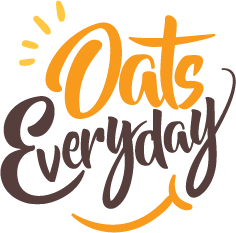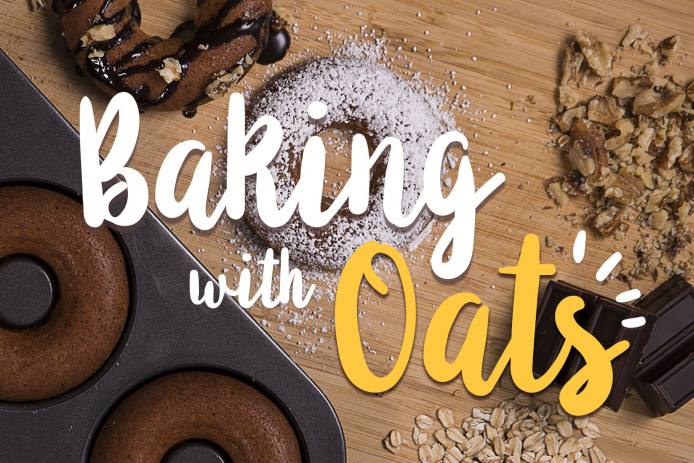It’s no wonder that we love baking with oats – virtually any baked good can be made a little healthier using oat flour, rolled oats or oat bran. You can add fiber and nutrition to your favorite recipes by giving them an oat makeover.
Oat Flour
Baked goods made with oat flour are generally moister and, in the case of something like chocolate chip cookies, a little chewier. Overall, though, the texture differences are minimal. Simply swap out some of the white or whole wheat flour called for with oat flour and enjoy all the health benefits, without the rustic quality of rolled oats. Your family and friends will be none the wiser.
A good guideline to follow for most baked goods is replacing one-third of the flour with oat flour. However, you can replace up to the full quantity if what you’re making doesn’t need to rise significantly. Oat flour lacks the gluten that allows yeast-leavened breads and buns to reach dizzying heights.
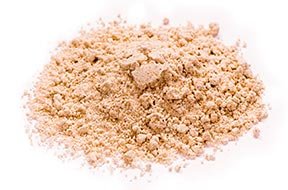
That said, if you are a bread-baker and want to make kneading your wheat breads a little easier, use oat flour on your board. It won’t toughen the dough if you accidentally add too much, or knead too long.
Oat flour is available at most grocery and natural foods stores, or you can easily make your own. Just put your rolled oats in a food processor and pulse the oats until you have flour. If you’re a perfectionist, feel free to sift out any larger pieces of oat that remain.
Rolled Oats
We love the nutty flavor that rolled oats lend to baked goods. Plus, they hold their shape in the finished product, giving that unmistakable texture and chew. With that in mind, cookies are a great place to start experimenting with oats in baking.
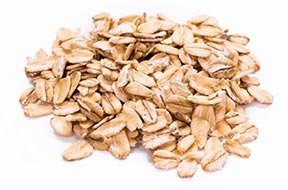
The easiest way to add rolled oats to a cookie recipe is to substitute oats for other add-ins, like nuts or coconut. If you want to add oats in addition to the add-ins, you may have to reduce some of the flour. The good news is most drop cookie doughs are very forgiving and can handle a few extra oats if you overshoot.
To add rolled oats to a muffin or quick-bread recipe, substitute up to one-third of the flour with an equivalent measure of rolled oats. Unless you are making something with a long baking time, like banana bread, it’s often a good idea to stir oats into the wet ingredients and let the mixture stand for 10 minutes before adding the dry ingredients. This allows the oats to soften before they hit the oven.
Oat Bran
Made from the outer layer of the oat kernel, oat bran is a versatile ingredient can be added to just about anything to increase your soluble and insoluble fiber intake.
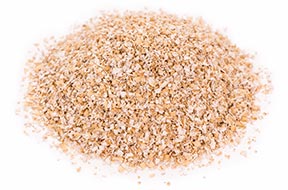
If you have never baked with oat bran before, you might be surprised to see that it’s quite different from what you picture when you think of “bran.” It’s quite delicate and somewhere between oat flour and Scottish oats in appearance. As well, being paler and softer than wheat bran, it will produce a bran muffin that’s lighter in both color and texture.
Oat bran is not just for muffins, though. Try using it in breads, cookies and even pastry. You can sprinkle in just a couple tablespoons or, if you really want things to be brantastic, use 3/4 cup of flour and 1/4 cup oat bran for every cup of flour called for in the recipe.
Whether you choose oat flour, rolled oats or oat bran, you can enjoy the same sweet taste you crave from your favorite baked goods, but with added health benefits. And now that you know which oat to use and when, you can start oats-perimenting!
